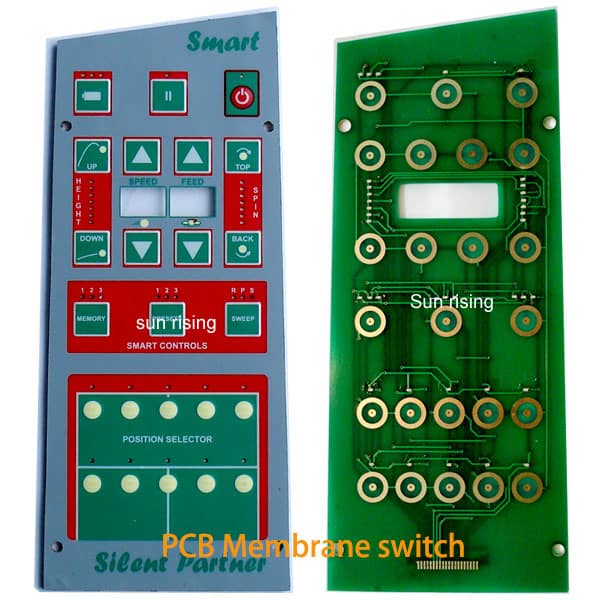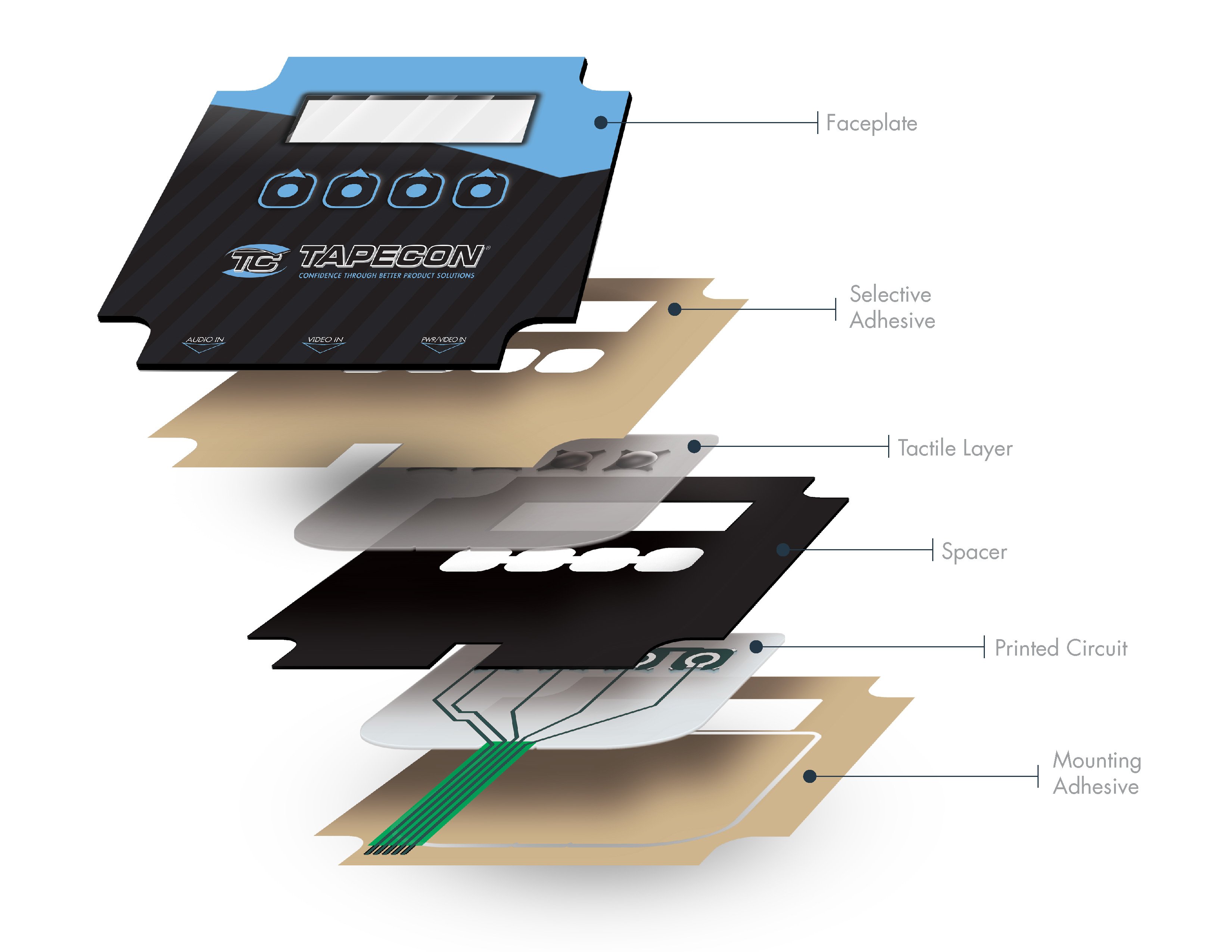Membrane Switch Innovation: The Key to Reliable and Cost-efficient Interfaces
Membrane layer button innovation has emerged as a critical part in the style of user interfaces, supplying both reliability and cost-effectiveness throughout a diverse array of applications. As we check out the complex benefits of membrane switches, their potential for advancement elevates concerns about future applications and progressing patterns.
Comprehending Membrane Change Innovation
Membrane layer switch technology is a widely used user interface solution in numerous electronic devices, offering a smooth blend of performance and design. This technology incorporates numerous layers of materials, normally consisting of a visuals overlay, spacer layer, and a circuit layer. The visuals overlay displays the interface components, while the spacer layer divides the circuit layer from the overlay until a user triggers a switch.
When pressure is applied to the overlay, the circuit layer finishes the electrical circuit, sending a signal to the gadget. This system enables for different setups, including tactile feedback and backlighting choices, improving user communication. Membrane layer buttons are commonly made using sturdy materials such as polyester or polycarbonate, guaranteeing durability and resistance to environmental variables like moisture and dust.
The flexibility of membrane switches over enables their application in diverse sectors, consisting of medical devices, consumer electronics, and industrial controls. Their compact design allows for assimilation into space-constrained settings, offering an efficient user interface without jeopardizing visual appeal. Recognizing the complexities of membrane layer button modern technology is necessary for suppliers and designers looking for to develop reputable and reliable human-machine interfaces.
Trick Benefits of Membrane Layer Buttons
While different interface remedies exist, membrane layer switches over offer unique benefits that make them a recommended option in many applications. Among the key benefits is their resilience; membrane layer buttons are designed to stand up to extreme ecological problems, consisting of moisture, dust, and temperature fluctuations, making certain long-lasting efficiency. This strength considerably decreases the requirement for regular replacements, therefore reducing total maintenance costs.

Moreover, membrane layer switches are light-weight and portable, making them ideal for applications where room is limited. Their low-profile layout contributes to a smooth look without endangering capability.
Cost-effectiveness is additionally a noteworthy benefit, as the production process for membrane layer changes often tends to be less costly compared to standard mechanical buttons. This price, incorporated with their dependability and convenience of installment, placements membrane switches as a functional remedy for a variety of sectors seeking effective and effective interface.
Applications Across Various Industries
How do membrane switches adjust to the varied requirements of different sectors? Membrane button modern technology is progressively identified for its check this site out versatility, making it ideal for a vast variety of applications across several sectors.
In consumer electronics, membrane buttons provide a compact option for remote controls and home devices, boosting customer experience via dig this user-friendly style. Furthermore, the commercial market leverages membrane layer switches for machinery control board, gaining from their resistance to severe atmospheres, such as wetness and dust.
Armed forces and aerospace applications additionally use membrane buttons for their integrity and capability to withstand extreme conditions, guaranteeing functional performance in vital scenarios. The food and beverage market adopts these buttons for automated systems, where sanitation and simplicity of operation are paramount (membrane switch). Ultimately, membrane layer buttons are tailored to meet the unique demands of each market, verifying their important function in contemporary innovation user interfaces
Design and Modification Choices

In the world of membrane button innovation, layout and modification alternatives play a crucial duty in enhancing performance and customer interaction. These switches can be customized to fulfill certain operational requirements and visual preferences, making them functional components in different applications.
Among the primary personalization alternatives is the layout of the button itself, which can be made to suit unique customer interfaces and ergonomic considerations. By readjusting the form, dimension, and arrangement of buttons, producers can develop instinctive layouts that assist in ease of usage. Furthermore, the unification of different shades and graphic overlays enables branding and boosted presence, making certain that users can swiftly determine functions.
Furthermore, membrane switches can be engineered with various responsive feedback systems, such as increased switches or audible clicks, to improve the individual experience. Various products can additionally be chosen for sturdiness and environmental resistance, resolving aspects such as wetness, temperature fluctuations, and chemical exposure.
Inevitably, the substantial layout and modification options available in membrane switch modern technology empower organizations to create tailored remedies that not just fulfill practical demands however also straighten with their branding and operational requirements.

Future Patterns in Membrane Layer Switches
As membrane switch innovation remains to progress, future patterns are progressively concentrated on improving individual experience and Web Site integrating innovative performances. One considerable pattern is the integration of touch-sensitive and capacitive technologies right into traditional membrane layer buttons. This advancement enables even more instinctive interface, providing responsive comments while preserving a sleek design.
An additional arising trend is using eco-friendly materials, driven by the expanding need for lasting manufacturing methods. Suppliers are seeking to lower their carbon footprint by making use of recyclable substratums and low-impact inks, aligning with worldwide sustainability goals.
Furthermore, the rise of the Net of Things (IoT) is motivating the incorporation of smart features into membrane layer switches. Boosted connectivity options will certainly allow devices to interact with each other, enabling seamless combination into broader systems.
Additionally, improvements in printing technologies, such as digital printing, are permitting higher layout versatility and modification. This makes it possible for manufacturers to create detailed layouts and lively colors cost-effectively.

Final Thought
In final thought, membrane layer button innovation represents a crucial development in individual interface design, providing significant advantages in toughness, modification, and cost-effectiveness. As improvements continue to emerge, specifically in touch-sensitive interfaces and lasting materials, the possibility for membrane switches over to improve customer experience and performance stays appealing.